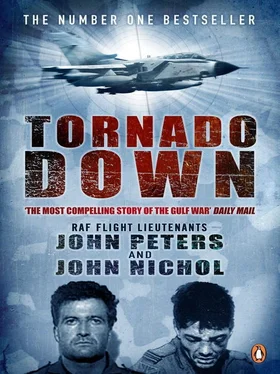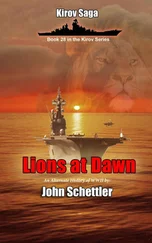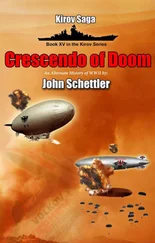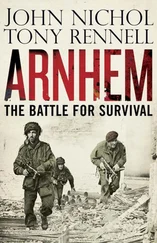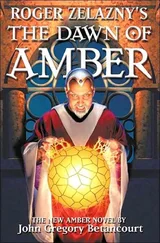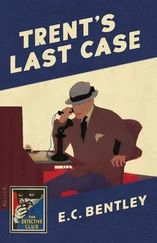As a Squadron, we began a special Gulf training syllabus. For a kick-off, this meant operational low-flying; in plain English, flying as low as possible. There are very few places this is allowed in peacetime, as the noise and the shock of a Tornado rocketing over their heads at 100 feet upset the local populace no end – not to mention the local livestock. In Germany, with the recent easing of tension between NATO and the Warsaw Pact, we had been told to stay above 1,000 feet when flying, at all times, which is about ten times as high as the aircraft would usually operate in war –plus a bit.
The Tornado GR1 is a ground-attack aircraft, so the sortie we practised most often was the ‘Hi-Lo-Hi’, as it is sometimes called. After the serene cruise from Germany at high level, you pop out over the North Sea to find England laid out before you like a map. Descending through the murk as we draw nearer to the target, we swoop out clear of the cloud base to the adrenalin rush of low-level flying. Rocketing along at 500 miles per hour at 100 feet, the airframe vibrating and shuddering, we are hedge-hopping, close enough to touch the tapestry of farmland flashing by outside. Greens, browns, the straw colour of ripe wheat, the bright yellow shock of rape fields succeed one another as we skim over lakes, flash down valleys. You apply power as the mountain ridge comes rushing up; the Tornado soars, in its element. Time and distance shrink. It’s the ultimate white-knuckle ride. The trick is to try to stay relaxed.
Most people who paid any attention to the news were drinking it down in gulps during those anxious days. Intelligence called us to a briefing right at the beginning of this harum-scarum period. The briefing officer, Major Peter Moody, told us that Saddam Hussein controlled the fourth largest standing army in the world, with over a million men permanently under arms.
He then went on to analyse some of the underlying causes of the Iraq-Kuwait conflict. Saddam Hussein, he said, claimed the British had carved up the region with complete abandon, inventing little kingdoms in a way that was bound to result in trouble. (God bless the British Empire.) Iraq’s aggression, if you accepted this thesis, was thus excused by its leader as historically inevitable – not his fault, in other words. But who accepted this thesis? Just to stir the pot a bit more, the Iraqi government was claiming that Kuwait had ‘stolen’ £ 1.3 billion of crude from the Rumaylah oilfield, which bestrides the border of the two countries. Kuwait had rejected Iraqi demands for compensation. Iraq then cancelled the £ 5.5 billion Kuwait had loaned it during the Iran-Iraq war. The Iraqis also accused Kuwait of selling Kuwaiti-produced oil at a cheaper rate than the official price agreed by the Organisation of Petroleum Exporting Countries which ‘deliberately’ cut Iraq’s own oil revenue. At least that gave us a bit more background.
Watching the news over the next few days, I was surprised at how quickly everything escalated. The United Nations Security Council adopted Resolution 660, condemning the invasion of Kuwait and demanding Iraq’s immediate and unconditional withdrawal. Saddam Hussein ignored 660, goading the West still further by massing another 100,000 regular troops on Iraq’s border with Saudi Arabia. Then, on 6 August, the UN adopted Resolution 661, calling for the immediate restoration of the legitimate government of Kuwait, and imposing mandatory economic sanctions on Iraq.
Next thing we knew, the United States had dispatched the first military forces to the area, on 7 August. On 8 August, the United Kingdom launched its own military contribution, which it called, with minimal charisma, ‘Operation Granby’. That was the day I was called back from Brüggen.
The Squadron now began flying in constituted four-aircraft formations, the classic Tornado attack four-ship. In other words, the same four crews always flew together in the same four-ship. Squadron Leaders Pablo Mason and Gary Stapleton were the crew of our lead aircraft. Gary was an organised workaholic, who used up whole rainforests of paper in his role as Flight Commander. Mark Paisey, tall, cool and self-confident, quiet but with a dry sense of humour, was paired with his navigator Mike Toft, a bloke you would always want around in a tight corner. Tofty was noted for his party piece, a ‘Clog Dance’. Then there was Chris Lunt, ‘Lunty’, red-haired, always with a ready reply or a joke, and his Scottish navigator, Colin ‘Stroppy Jock’ Ayton. And then there was us.
These same pairs would eventually go to war together. Quite soon, flying as a unit every day, the eight guys in our four-ship had grown so closely-knit, we practically knew one another’s bowel movements. We had immense trust and understanding going. Each of us could predict what the other guy was going to do in the air, without having to ask – useful when the chips are down.
We were flying a lot of ‘parallel track’, a favourite night or all-weather technique. ‘Parallel track’ is where the four Tornados fly in parallel pairs of aircraft, with two nautical miles’ lateral split, and about forty seconds’ longitudinal time separation between the lead and rear pairs. The tricky bit is getting each aircraft to stay in position and on time, at the planned speed, throughout the entire sortie, including the attack itself. This sounds as though it ought to be straightforward. The problem is that in the dark or rain you cannot see any of the other aircraft. You have to pray that their crews are ‘following the green writing’ – the information in the Head-Up Display (HUD) – to stay on their time-line and on track. Each crew makes sure that they know exactly where their Tornado is in four dimensions. Maintaining a constant four-mile separation from the man ahead and two-mile separation from the man abeam is no mean feat over a round trip of 900 miles. Remaining in position and on time is essential, since the risk of collision increases exponentially as a function of time/speed inaccuracies. There is also the very real risk of flying through the fragments of the bomb that has just been dropped by your buddy in the aircraft just ahead of you, should you happen to arrive over the target a few seconds early.
We also began practising air-to-air refuelling: first the day check sorties, because it was the first time we had ever done it, then the night sorties. This was thrill-a-minute stuff. At first, it was really difficult getting four Tornados onto the tanker, in daytime, with the expert help of air traffic control, not to mention dangerous. Then, suddenly, someone said, ‘Right, now you are going to do the air-to-air refuelling at night.’
This was a bit hard to swallow. How could you possibly get four aircraft, and an enormous tanker, into one small piece of sky, at night, when they could not see one another? ‘Don’t worry,’ they said, ‘you’ll do it.’ And we did it.
Then they said, ‘And now, you are going to do it silently. You are not going to have any help from air traffic control; you are not going to talk to one another; you are going to go and find a tiny tanker [all of a sudden, it seemed tiny] in thousands of square miles of airspace [all of a sudden, the sky seemed huge]; you are going to put four jets on it, in pairs, and when refuelled you are going to descend into the darkness of the North Sea as a coherent four; and you will refrain from hitting one another, or the tanker. You will be travelling at 400 miles per hour, and you will be separated from each other by twenty seconds.’
We gazed at one another in disbelief. We all said, ‘It can’t be done.’ Then we went off and did it.
At night, the closure rate between your own and the other aircraft is very, very difficult to judge. In this situation, one thing the pilot and navigator must have is mutual trust: great hunking dollops of it, blind and unquestioning. John had to trust my flying skills when we were approaching the lead Tornado and the tanker, ten yards from another aircraft, flying off nothing more than two small red cigartips, the glow from the engines of the Tornado up ahead of us in the darkness. But before we even reached that stage, I had to trust his skill with the radar. As a pilot, I could not see the aircraft in front of me until we were right on it. So John ‘talked down’ ranges and heights to me as these decreased on the approach run. Basically, his job was to monitor the position of the tanker and the other jets at the tanker, then fly me into the Victor, literally on a course to hit it, until I picked it up visually. This only happened when it was very, very close indeed. Until I actually saw that black shape against the black sky, the only guide was John’s voice in my ears.
Читать дальше
